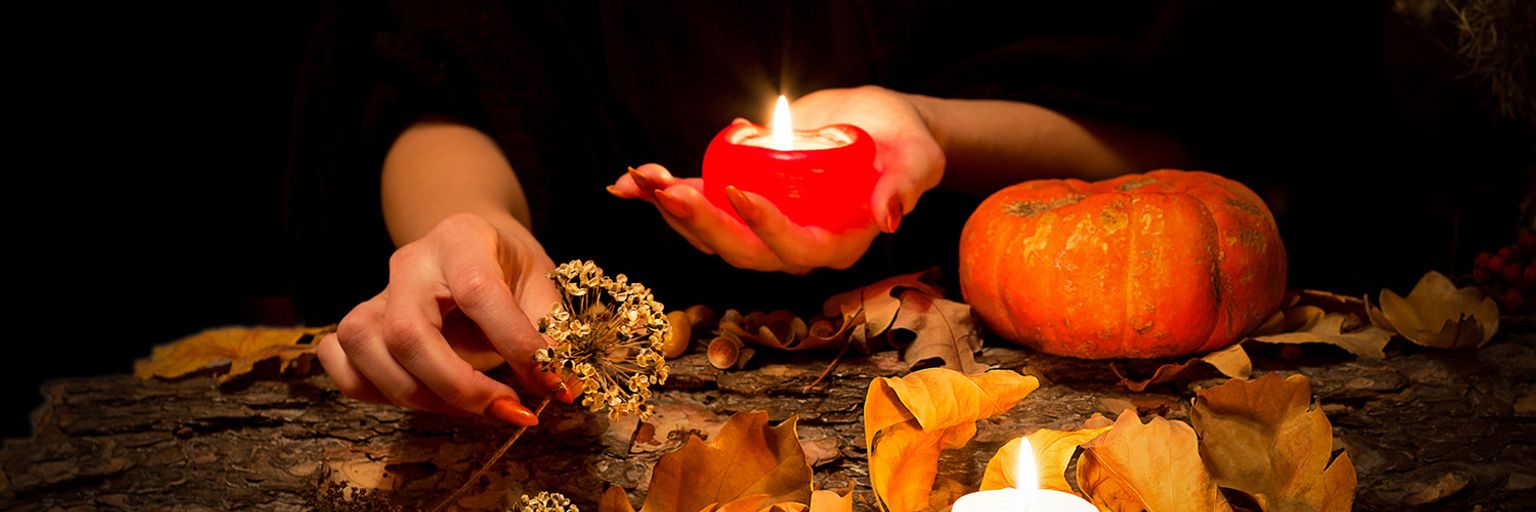
To pay for your reading on your telephone bill, simply call
Instantly message our featured psychics online via psychic messenger.
Click to start
Register now to start your reading online. PSYCHIC MESSENGER- Cheapest psychic service in the UK
- Our readers are available 24/7
- 100% confidential service
- In-depth, concise, personal readings
- Thousands of 5* reviews
Published 05/03/2024 by Joanne Jones
Difference Between Halloween and Samhain
Halloween and Samhain may have some similarities but also distinct differences. The difference between Samhain and Halloween can be traced back to their origins and the cultural contexts in which they developed.
One key difference between Halloween and Samhain lies in their historical timelines. While Halloween, as we know it today, originated in the 19th century as a pagan festival, Samhain has much older roots dating back to ancient Celtic culture in the 9th century.
Another difference between the two celebrations lies in their association with evil spirits. Halloween is associated with ghosts, witches, and other supernatural entities. However, in Samhain, the focus was not solely on evil spirits but otherworldly beings who could bring blessings or misfortune.
What Is the Difference Between Samhain and Halloween?
Halloween is widely celebrated as a secular holiday in the 20th century, while Samhain has pagan and religious connotations. Halloween has become a time for costumes, trick-or-treating, and parties, while some modern-day pagans still observe Samhain as a spiritual celebration of the winter solstice.
One notable difference between Samhain and Halloween is the use of animal heads and skins. In ancient times, Celts wore these disguises to ward off evil spirits during Samhain. This practice is not typically associated with Halloween.
The influence of Irish immigrants in America played a role in shaping Halloween into its current form. Irish immigrants brought their traditions and customs with them, including elements of Samhain. Over time, these traditions merged with American culture to create what we now know as Halloween.
Halloween and Samhain share similarities in their celebration of the supernatural and connection to ancient Celtic traditions; they also have distinct differences. Halloween has become a holiday focused on costumes and festivities, while Samhain remains a spiritual observance for some pagans.
The historical timelines, associations with evil spirits, religious connotations, and specific practices during the celebrations all contribute to the unique characteristics of each holiday.
Celtic traditions heavily influenced both Halloween and Samhain. However, Halloween adopted Christian influences with the introduction of All Saints' Day on November 1st by Pope Boniface IV in the 7th century. This led to Halloween being associated with Christian saints and holy figures.
What Is Samhain?
Samhain, pronounced "sow-in," is a Gaelic festival marking the end of the harvest season and the beginning of the darker half of the year. It is celebrated on the night of October 31st to November 1st. Historically, Samhain was an important festival in the early Celtic calendar, and many of its traditions have survived to this day.
Samhain was believed to be a time when the veil between the worlds of the living and the dead was at its thinnest, allowing the spirits of the dead to return to earth. It was a time to communicate with the spirits, seek guidance and protection, and honour ancestors.
The festival was also associated with divination and prophecy, with many rituals and games aimed at foretelling the future.
The traditional symbols of Samhain include apples, nuts, and pumpkins, which were used for divination and eaten as part of the feast. Bonfires were also an essential part of the celebration, and people would jump over the flames to purify their bodies and ward off evil spirits.
Today, many of the traditions of Samhain have been absorbed into Halloween, which originated as a Christian festival designed to replace the pagan traditions of Samhain. However, many still celebrate Samhain as a distinct festival, often in conjunction with other spiritual practices such as Wicca or Druidism.
Origins of Samhain
The origins of Samhain can be traced back to the ancient Celtic pagans who lived in what is now known as Ireland. The Druids, the religious leaders of the Celts, primarily observed this Irish tradition. Samhain was regarded as one of the most important religious celebrations in the Celtic calendar and was celebrated on the night between October 31st and November 1st.
Samhain was when the Celts believed the veil between the living and the dead was blurred. It was thought that the spirits of the dead came back to visit the living during this time, and it was a time of great reverence and respect for the ancestors.
The Druids performed various pagan practices and rituals during Samhain, including lighting large bonfires to ward off evil spirits and offering sacrifices to the gods and goddesses. It was also believed that the spirits of the dead could provide guidance and wisdom to the living, and the Druids would often consult with the dead during this time.
As Christianity spread throughout Ireland, the festival of Samhain became associated with All Saints' Day, which is celebrated on November 1st. The night before All Saints' Day became All Hallows' Eve, which eventually evolved into Halloween.
The origins of Samhain are steeped in ancient Celtic traditions and beliefs and continue to inspire people to this day with its connection to the cycle of life, death, and rebirth.
Traditions and Celebrations
During Samhain, people would light fires and make offerings to the spirits of the dead. They also believed that by disguising themselves in costumes, they could hide from the spirits and avoid being harmed.
The tradition of carving pumpkins and other root vegetables, such as turnips and beets, into lanterns was also common during Samhain. These lanterns were meant to ward off evil spirits and guide the spiritual entities back to their realm.
Spiritual Significance of Samhain
Spiritually, Samhain was a time for the Celts to reflect on their mortality and connection to life and death cycles. It was a time to honour those who had passed before and to seek guidance and support from their ancestors. Many rituals, including divination, were performed during this time to gain insight into the future.
What Is Halloween?
Halloween is a popular holiday celebrated yearly on October 31st. It is primarily in Western countries such as the USA, Canada, and the UK. The holiday has a rich historical background and is deeply rooted in ancient Celtic traditions.
Historical Background
Historically, Halloween evolved from the ancient Celtic festival of Samhain, which was celebrated on November 1st and marked the end of summer and the start of winter.
During Samhain, it was believed that the veil between the living and the dead was thinnest, and spirits could cross over into the world of the living. People would dress up in costumes and light fires to ward off these spirits and honour their ancestors.
Modern Celebrations
Modern celebrations of Halloween include trick-or-treating, costume parties, and decorating homes with spooky decorations. While some of these traditions have their roots in ancient Celtic rituals, they have evolved and taken on a life of their own over time.
Evolution From Samhain to Halloween
When the Roman Empire conquered the Celts in the first century AD, they introduced their holidays and traditions. One such holiday was Feralia, held in late October to honour the dead. Another was the festival of Pomona, which celebrated the Roman goddess of fruit and trees. It is believed that some of the traditions of these Roman festivals were merged with Samhain over time.
As Christianity spread throughout Europe, the Church attempted to replace pagan holidays and traditions with their own. In the 8th century, Pope Gregory III named November 1st All Saints' Day. This was a day to honour all the saints and martyrs of the Church. This day was also known as All Hallows' Day, with the night before being called All Hallows' Eve, which eventually grew to be called Halloween.
Over time, the traditions of Halloween evolved further, with the addition of activities such as trick-or-treating, pumpkin carving, and haunted houses.
Halloween has become a fun and popular holiday celebrated in many parts of the world. Its origins may have been rooted in ancient pagan beliefs and practices, but it's modern incarnation blends various cultural influences and allows for endless creativity and spooky fun.
Comparing Halloween and Samhain
Both similarities and differences can be drawn between these two celebrations. Both festivals are associated with the end of the harvest season and the beginning of the winter months in the Northern Hemisphere. They are celebrated at the same time, with Halloween being observed on October 31st and Samhain being celebrated from October 31st to November 1st.
Similarities Between Halloween and Samhain
One of the similarities between Halloween and Samhain is their shared association with death and the afterlife. Both holidays commemorate the departed souls of the deceased and honour their memory through diverse customs and rituals.
Halloween is often associated with dressing up in spooky costumes, carving pumpkins, and going trick-or-treating. On the other hand, Samhain is observed with rituals such as burning sacred fires, divination, and offerings to the spirits.
Difference Between Samhain and Halloween
What is the difference between Samhain and Halloween? While many of the customs and motifs of Halloween and Samhain may appear the same, there is a significant difference between them.
Halloween has its roots in the Christian observance of All Saints' Day and All Souls' Day and was introduced to America by Irish immigrants in the 1800s. Meanwhile, Samhain is an ancient Celtic festival and one of the most significant pagan holidays of the year.
The Influence of Samhain on Modern Halloween Traditions
The influence of Samhain on modern Halloween traditions can be seen in many aspects of the holiday, such as the use of symbolism and imagery, the popularisation of costumes and trick-or-treating, and the persistent theme of death and the supernatural.
Symbolism and Imagery
Symbolism and imagery play a significant role in modern Halloween and Samhain celebrations. The jack-o-lantern, a carved pumpkin with a lit candle inside, is a traditional symbol of Halloween. Its origins can be traced back to similar Celtic traditions where turnips were carved and used to ward off evil spirits.
The colours black and orange are also associated with Halloween, with black representing death and darkness and orange representing the harvest and autumn.
Costumes and Trick-or-Treating
Costumes and trick-or-treating have become integral parts of modern Halloween celebrations. Children and adults dress up in various costumes, ranging from spooky ghouls and ghosts to superheroes and pop culture icons.
Trick-or-treating, the practice of going door-to-door to receive candy and other treats, is a tradition traced back to Samhain. During the festival, the Celts would leave food and offerings outside their homes for the spirits that roamed the earth. The practice of trick-or-treating likely evolved from this tradition.
The Theme of Death and the Supernatural
The theme of death and the supernatural is a constant presence in modern Halloween celebrations. Ghost stories, horror movies, and haunted houses are all popular ways to indulge in the spookiness of the holiday.
The idea of facing one's fears and confronting death is also a common motif. However, despite its focus on death, Halloween ultimately celebrates life and acknowledges the cyclical nature of existence.
The influence of Samhain on modern Halloween traditions is evident in the use of symbolism and imagery, the popularisation of costumes and trick-or-treating, and the persistent theme of death and the supernatural. By embracing the darker aspects of life and death, Halloween allows people to connect with their ancestors and the cycle of the seasons.
Psychic Readings
Halloween, the season of spooky tales, candy-filled treats, and eerie costumes, is a perfect time to connect with the mystical world of psychics. This is why many people seek guidance through psychic readings during Halloween and Samhain, especially with Trusted Psychics - a renowned network of psychics who have provided accurate insights and guidance for over 30 years.
The time of Samhain, or Halloween, is the perfect time to contact a Trusted Psychic because it is believed to be when the veil between the earthly world and the spiritual realm is the thinnest. This means that individuals seeking psychic readings are more likely to connect with spirits, ancestors, and lost loved ones, enhancing their chances of receiving accurate guidance and insights.
At Trusted Psychics, clients can opt for psychic readings over the phone or through an online chat on Live Messenger. This means that individuals who prefer the comfort of their homes or would like to avoid the hustle and bustle of Halloween can still experience the magic of psychics.
The Trusted Psychics team comprises experienced and intuitive psychics who have perfected their intuitive abilities for several years, using diverse techniques like tarot cards, crystal balls, and clairvoyance to provide meaningful and helpful guidance to clients. They work diligently to create a safe and non-judgmental environment where individuals can ask questions without fear of being scrutinised or judged.
FAQs
Why Did Samhain Change to Halloween?
Samhain, originally a Celtic festival that marked the end of the harvest period and the beginning of winter, gradually changed over time and transformed into the holiday we know today as Halloween. As Christianity spread throughout Europe, many pagan traditions were assimilated into Christian holidays and practices to convert people to the new religion.
The Catholic Church designated November 1st as All Saints' Day, honouring saints and martyrs. The day before, October 31st, became known as All Hallows' Eve, or "Hallowe'en" for short. This allowed the Christians to incorporate some pagan traditions into their celebrations while promoting their religious beliefs.
Is Samhain Older Than Halloween?
Samhain is undoubtedly the older of the two celebrations, dating back thousands of years, while Halloween as we know it today has only been celebrated for a few centuries. However, the modern version of Halloween has undergone significant changes and has been heavily influenced by Christian traditions.
How Do You Really Pronounce Samhain?
The traditional Irish pronunciation of Samhain is "sow-in," with the first syllable rhyming with "cow." This has been the most widely used pronunciation for centuries and is preferred by many scholars and academics in Celtic studies. However, non-Irish speakers often pronounce it as "sam-hayn" or "sa-wane," which are common mispronunciations.
What Do Samhain and Halloween Have in Common?
One of the most significant things that Samhain and Halloween have in common is the idea of the "veil between worlds".
In both festivals, it is believed that the boundary between the living and the dead is at its thinnest at this time of year, and as such, it is a time when spirits are more likely to be present. This is why both festivals have traditionally been associated with ghosts, witches, and other supernatural creatures.
Another common feature of Samhain and Halloween is dressing up in costumes. This tradition dates to the early days of Samhain, when people would disguise themselves as ghosts and other spirits to avoid being recognised by the real ghosts and spirits that were said to be roaming the earth.
How Is Samhain Celebrated Today?
In pagan and Wiccan communities, Samhain is still observed as a solemn occasion of spiritual reflection and meditation.
It is believed that the veil between the living and the dead is at its thinnest on this night, and many people use this time to communicate with deceased loved ones or perform rituals honouring ancestors. Some also use the time to perform divinations or seek guidance from spirits.
In addition to these spiritual practices, many contemporary Pagans and Wiccans celebrate Samhain to connect with nature and promote feelings of renewal and rebirth. Some hold outdoor rituals to mark the changing seasons and meditate on the cycles of birth, death, and rebirth inherent in the natural world.
Can Samhain and Halloween Be Celebrated Interchangeably?
Samhain and Halloween have roots in the ancient Celtic tradition, but they are different. Samhain, which means "summer's end," was a festival celebrated by the Celts at the end of the harvest season. It marked the first day of winter and was considered a time when the veil between the worlds of the living and the dead was at its thinnest.
Halloween is a modern holiday that originated in the Christian tradition and was influenced by the medieval Christian festival of All Saints' Day, also known as All Hallows' Day. It falls on the same day as Samhain but has evolved into a secular celebration that involves dressing up in costumes, carving pumpkins, and going trick-or-treating.
While there are similarities, there is also a big difference between Samhain and Halloween. There are distinct cultural traditions with different meanings and histories. Celebrating them interchangeably can be seen as disrespecting the cultural significance of both holidays.
It is essential to understand and respect each holiday's cultural origins and meanings and to celebrate them accordingly.
Contact Trusted Psychics Halloween readers today.
How To Contact A Trusted Psychic
Phone a live Psychic 24 hours a day
View all our live phone psychic and tarot readers online.
View All Live readersMessage a live Psychic 24 hours a day:
View all our live messenger psychic and tarot readers online.
launch messengerRecent Articles From the Trusted Psychics Blog
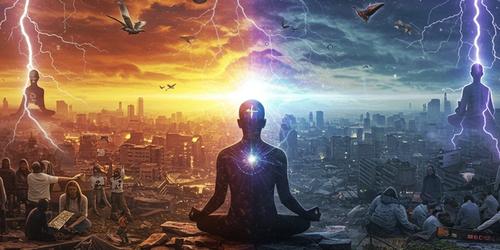
Psychic Predictions 2025 to 2026: The Economy Boom or Bust
Psychic Predictions 2025 to 2026: The Economy Boom or Bust. As we prepare for the next 12 months, you need information on poverty & spiritual awakenings.

Why Do People Still Believe in Psychic Readings? Video
In this video, we'll look into why people believe in psychic readings. Trusted Psychics explores the reasons behind the growing interest in psychic insight.
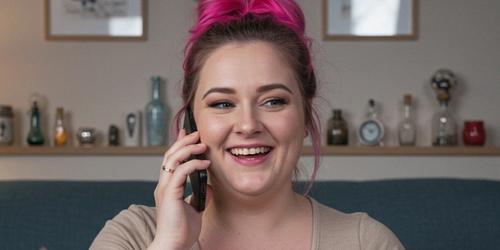
How Do You Prepare for a Phone Psychic Reading?
Preparing for a phone psychic reading is a crucial step in receiving a psychic reading. Know how to get the most from your reading with Trusted Psychics today.

Top 10 Psychic Readers on Trusted Psychics
Trusted Psychics have chosen their top 10 psychic readers! Our selection criteria include readers with ratings of 4.5 stars or above from verified reviews.
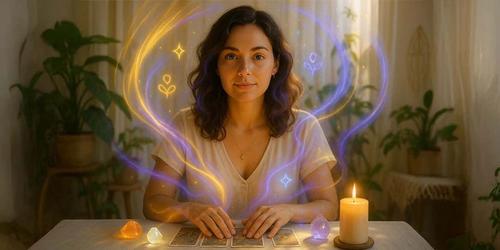
Online Psychic Readings With Trusted Psychics: Top 5 Tips Video
Are you curious about how online psychic readings work? In this video, we share our top 5 tips, tools, and truths to help you get the most out of your reading.
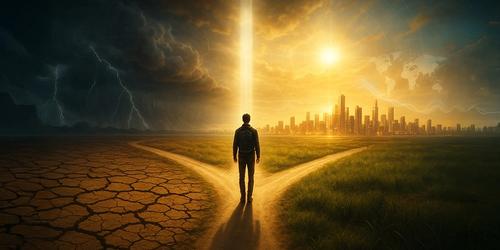
Shocking Psychic Predictions for 2025–2026 UK Video
Trusted Psychics are predicting global changes in 2025 & 2026, from climate disasters & economic breakdown to love transformations. Let's explore what’s next.

